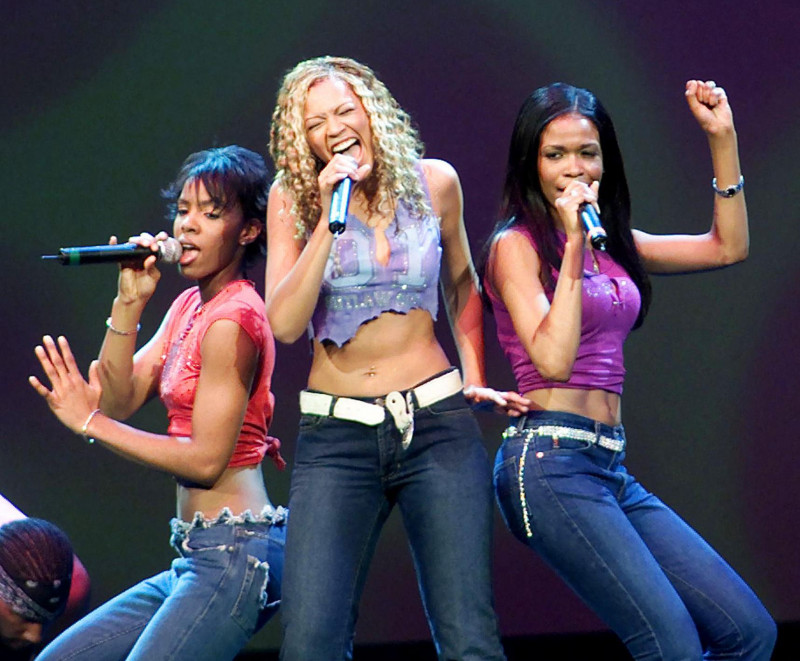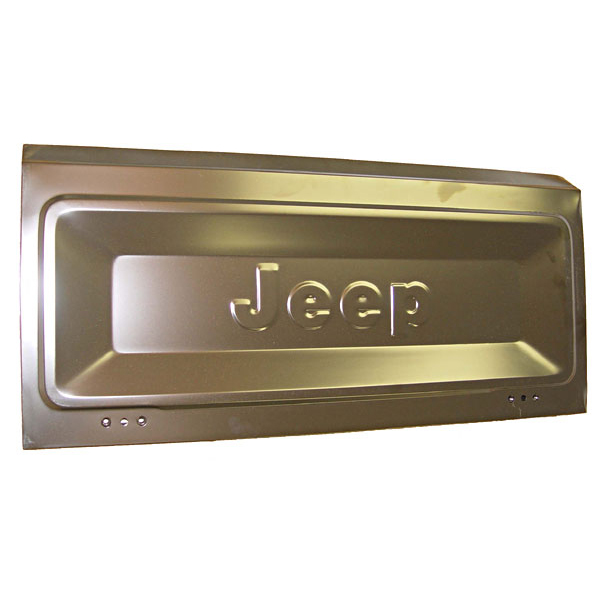2000 Wrangler Jeep For Sale: Your Comprehensive Guide to Buying and Selling an Off-Road Icon
2000 Wrangler Jeep For Sale: Your Comprehensive Guide to Buying and Selling an Off-Road Icon /jeeps.truckstrend.com
The Jeep Wrangler is more than just a vehicle; it’s a statement, an adventure, and a piece of automotive history. Among its various iterations, the 2000 model year, part of the beloved TJ generation (1997-2006), holds a special place in the hearts of off-road enthusiasts and casual drivers alike. When you see a "2000 Wrangler Jeep For Sale" sign, it’s not just an advertisement for a used car; it’s an invitation to join a passionate community and own a highly capable, iconic machine. This comprehensive guide will delve into everything you need to know about buying or selling this particular vintage, ensuring you navigate the process with confidence and clarity.
Why the 2000 Jeep Wrangler TJ Still Commands Attention
2000 Wrangler Jeep For Sale: Your Comprehensive Guide to Buying and Selling an Off-Road Icon
The 2000 Jeep Wrangler TJ is celebrated for bridging the gap between the utilitarian YJ (square headlights) and the larger, more refined JK/JL generations. Its round headlights harken back to the classic CJ, while its coil-spring suspension system (a significant upgrade from the YJ’s leaf springs) provided a vastly improved ride quality both on and off the pavement. This combination of classic aesthetics and modern comfort, paired with legendary off-road prowess, makes the 2000 TJ an enduring favorite.
Its appeal lies in its simplicity, robust construction, and unparalleled modifiability. Whether you’re looking for a dedicated trail rig, a weekend adventure vehicle, or a unique daily driver, the 2000 Wrangler offers a versatile platform that can be tailored to almost any need. Its reputation for reliability, especially with the venerable 4.0-liter inline-six engine, further cements its desirability in the used vehicle market.
Key Features and Specifications of the 2000 Wrangler
Understanding the core characteristics of the 2000 Wrangler is crucial for both buyers and sellers. This model year offered a range of configurations that impact performance, comfort, and ultimately, value.
Engine Options:
- 4.0L PowerTech I-6: This inline-six cylinder engine is the heart of many beloved TJs. Known for its torque, durability, and relatively simple design, it produces 190 horsepower and 235 lb-ft of torque. It’s the preferred choice for most enthusiasts due to its robust nature and ample power for off-roading and highway cruising.
- 2.5L PowerTech I-4: A smaller, less powerful four-cylinder option, producing 120 horsepower and 140 lb-ft of torque. While more fuel-efficient, it often struggles with highway speeds or heavy modifications, making it less sought after.

Transmission Options:
- 5-Speed Manual (AX-15 for 4.0L, NV1500 for 2.5L): The classic choice for off-road control and driver engagement.
- 3-Speed Automatic (32RH): A durable, if somewhat basic, automatic transmission offered with both engines.

Drivetrain and Axles:
- Command-Trac NP231 Transfer Case: Standard on most models, offering 2HI, 4HI, and 4LO.
- Dana 30 Front Axle: Standard across all trims.
- Dana 35 Rear Axle: Standard on most trims, adequate for light to moderate off-roading.
- Dana 44 Rear Axle: An optional, more robust rear axle, highly desirable for serious off-roaders due to its strength and ability to handle larger tires and lockers. This was often found on Sport and Sahara models with specific packages.

Trim Levels:
- SE: The base model, typically equipped with the 2.5L engine, basic interior, and minimal features.
- Sport: A popular mid-range trim, usually featuring the 4.0L engine, more comfortable seating, and often the option for the Dana 44 rear axle.
- Sahara: The premium trim, characterized by unique fender flares, upgraded cloth interior, fog lights, and often more standard features, including the 4.0L engine.
- Apex Edition: A special edition for 2000, featuring unique graphics, special wheels, and often a hard top.
Body Styles:
- Soft Top: Standard, offering open-air freedom.
- Hard Top: Optional, providing better security, insulation, and noise reduction. Many Wranglers on the used market will have both or have been converted.
What to Look For When Buying a 2000 Wrangler
Purchasing a 2000 Wrangler requires a keen eye and thorough inspection, as these vehicles are often used in demanding conditions. Here are the critical areas to scrutinize:
- Rust, Rust, Rust: This is the single most important factor.
- Frame: Inspect the frame rails meticulously, especially near the control arm mounts (front and rear), the skid plate mounting points, and the rear cross member. Significant rust here can be a deal-breaker or require costly repairs.
- Body: Check the floorboards (especially under the carpet), rocker panels, fender wells, and door hinges. Surface rust is common; rot is problematic.
- Mechanical Condition:
- Engine (4.0L): Listen for knocking, ticking (especially the exhaust manifold), and look for oil leaks (rear main seal is common but not always severe, valve cover gasket, oil pan). Check coolant for proper color and level.
- Transmission: For manuals, check clutch engagement (slipping, hard pedal). For automatics, ensure smooth shifts without flaring or harshness.
- Drivetrain: Engage 4WD (both 4HI and 4LO) and listen for unusual noises (clunking, grinding). Check U-joints on the driveshafts for play. Inspect differential covers for leaks.
- Suspension: Look for worn bushings, leaking shocks, cracked springs, or signs of improper lift kit installation.
- Steering: Check for excessive play in the steering wheel, which could indicate worn steering components (tie rods, ball joints, steering box).
- Electrical System: Test all lights, gauges, HVAC controls, power windows (if equipped), and the radio.
- Modifications: Many TJs are modified. Assess the quality of aftermarket parts and installation. Poorly installed lifts, oversized tires, or shoddy wiring can lead to future problems. Be wary of Wranglers that appear heavily abused off-road.
- Documentation and History: Ask for service records. Run a vehicle history report (CarFax, AutoCheck) to check for accidents, salvage titles, flood damage, or odometer rollbacks.
- Test Drive: Drive it on various surfaces, including highway speeds, to check for vibrations, pulling, or unusual noises. Engage 4WD in a safe, unpaved area.
Pricing Your 2000 Wrangler: Factors Influencing Value
The value of a 2000 Wrangler can vary significantly based on several factors. Here’s what influences its price:
- Overall Condition: A rust-free frame and minimal body rust are paramount. Mechanically sound vehicles with good maintenance records command premium prices.
- Mileage: Lower mileage generally means higher value, assuming maintenance has been consistent.
- Engine: The 4.0L inline-six is significantly more desirable than the 2.5L four-cylinder.
- Transmission: While personal preference plays a role, manual transmissions are often slightly more sought after for their off-road control.
- Trim Level & Options: Sahara and Sport models, especially those with the optional Dana 44 rear axle, will fetch higher prices than SE models. Features like a hard top, air conditioning, and cruise control also add value.
- Modifications: Quality, desirable modifications (e.g., well-installed lift kits from reputable brands, winch, upgraded bumpers) can add value, but extreme or poorly done modifications can deter buyers.
- Geographic Location: Wranglers in rust-prone areas (e.g., Northeast, Midwest) with clean frames will be rare and command higher prices locally. In arid regions, rust is less of a concern, but overall wear and tear from sun exposure might be.
2000 Wrangler Jeep For Sale: Estimated Price Range
| Condition | Engine | Transmission | Mileage | Key Features/Notes | Estimated Price Range (USD) |
|---|---|---|---|---|---|
| Poor | Any | Any | 180k+ | Significant rust, major mechanical issues, heavy damage, salvage title. | $3,000 – $6,000 |
| Fair | 2.5L/4.0L | Any | 150k-200k | Moderate rust, minor mechanical issues, worn interior, needs work. | $6,000 – $9,000 |
| Good | 4.0L | Manual/Auto | 100k-150k | Minimal rust, well-maintained, minor cosmetic flaws, possible quality mods. | $9,000 – $14,000 |
| Excellent | 4.0L | Manual/Auto | <100k | Little to no rust, pristine condition, meticulously maintained, desirable options (Dana 44, hard top). | $14,000 – $20,000+ |
Note: These are estimated ranges and can vary widely based on specific market demand, local conditions, and unique vehicle history.
Tips for a Successful Purchase or Sale
Whether you’re looking to buy or sell, a strategic approach will yield the best results.
For Buyers:
- Do Your Homework: Research common TJ issues, particularly rust spots.
- Be Patient: The perfect 2000 Wrangler might not appear overnight. Don’t rush into a purchase.
- Inspect Thoroughly: Don’t skip the rust check. Consider hiring a trusted mechanic for a pre-purchase inspection (PPI), especially if you’re not mechanically inclined.
- Test Drive Extensively: Pay attention to every sound and sensation.
- Negotiate Wisely: Be prepared to walk away if the price isn’t right or if significant hidden issues are uncovered. Factor in potential repair costs.
- Understand the "Jeep Wave": You’re joining a community!
For Sellers:
- Be Transparent: Honesty about the vehicle’s condition, including any flaws, builds trust with potential buyers.
- Clean and Detail: A clean vehicle presents much better and suggests good overall care.
- Take Great Photos: High-quality, well-lit photos from multiple angles (interior, exterior, engine bay, undercarriage if possible) are crucial. Highlight desirable features.
- Gather Documentation: Have all service records, the title, and any relevant paperwork organized.
- Price Competitively: Research comparable 2000 Wranglers in your area and price yours realistically based on its condition and features.
- Highlight Key Selling Points: Emphasize the 4.0L engine, Dana 44 axle (if present), low rust, recent maintenance, or desirable modifications.
- Be Prepared for Questions: Buyers will have many questions; answer them thoroughly and patiently.
Common Challenges and Solutions
While the 2000 Wrangler is a fantastic vehicle, potential owners should be aware of common challenges:
- Rust: As discussed, this is the biggest concern. Solutions range from extensive frame repair/replacement (costly) to preventative rust-proofing for less affected vehicles.
- Fuel Economy: The 4.0L is thirsty, typically delivering 15-18 MPG. There’s no real "solution" other than accepting it or opting for the less powerful 2.5L.
- Ride Quality: While better than the YJ, it’s still a short-wheelbase, solid-axle SUV. It can be bouncy and less refined than modern vehicles. Upgraded shocks and suspension components can improve comfort.
- Soft Top Maintenance: Soft tops require care to prevent leaks and tears. Replacement tops are available.
- Finding an Unmolested Example: Many TJs have been modified. If you prefer stock, it might take longer to find one.
Frequently Asked Questions (FAQ)
Q1: Is the 2000 Jeep Wrangler TJ reliable?
A1: Yes, especially with the 4.0L engine, it’s considered very reliable and durable. Regular maintenance is key. Common issues like the exhaust manifold crack or rear main seal leak are generally manageable.
Q2: Which engine is better, the 2.5L or 4.0L?
A2: For most applications, the 4.0L inline-six is vastly superior due to its power, torque, and legendary reliability. The 2.5L is adequate for light duty but struggles with highway speeds or heavier modifications.
Q3: How much rust is too much?
A3: Any significant rust on the frame, especially around the control arm mounts or skid plate, is a major red flag. Surface rust on the body is often manageable, but holes or deep pitting indicate serious problems. Always prioritize a solid frame.
Q4: Can I daily drive a 2000 Wrangler?
A4: Absolutely. Many owners daily drive their TJs. However, be aware of its less refined ride, higher noise levels (especially with a soft top), and lower fuel economy compared to modern SUVs.
Q5: Are parts easy to find for a 2000 Wrangler?
A5: Yes, parts availability for the TJ generation is excellent. Both OEM and a vast aftermarket supply a wide range of components, from routine maintenance items to extensive modification parts.
Q6: What’s the typical fuel economy?
A6: Expect around 15-18 miles per gallon (MPG) with the 4.0L engine, depending on driving style, tire size, and modifications. The 2.5L might get slightly better, around 17-20 MPG.
Conclusion
The "2000 Wrangler Jeep For Sale" listing represents an opportunity to own a true automotive icon. The TJ generation, with its perfect blend of classic Jeep aesthetics and coil-sprung comfort, remains one of the most sought-after Wranglers on the used market. By understanding its key features, knowing what to look for during an inspection, and being aware of the factors that influence its value, both buyers and sellers can navigate the transaction confidently. More than just a vehicle, a 2000 Wrangler offers a gateway to adventure, a vibrant community, and a unique driving experience that continues to captivate enthusiasts decades after its production. It’s not just a car; it’s a lifestyle.





